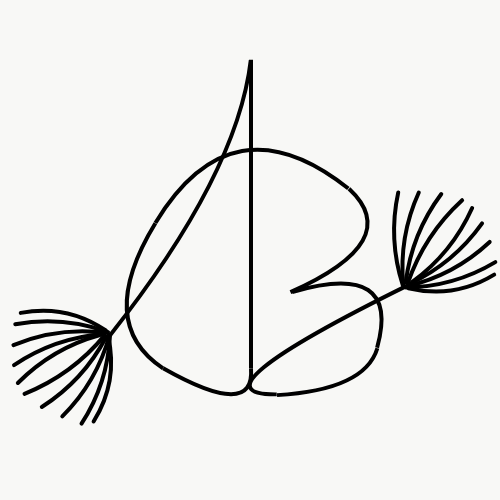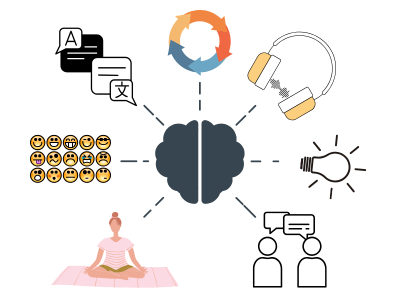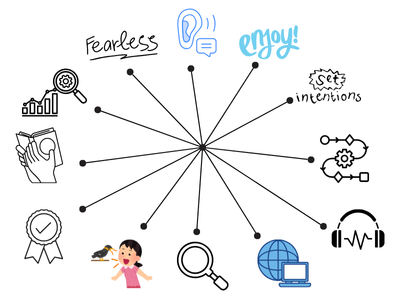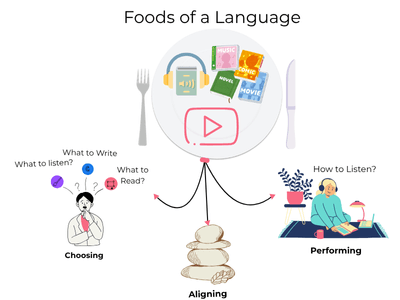Disclaimer: I’ve added book links from Amazon in this post, and I’ll earn commission if you buy from these links.
When people want to start language learning, they often get trapped in their minds that they must try hard and might require extensive conscious effort due to a lack of knowledge and understanding about language acquisition: How does language develop in one’s mind? And what is the process of language learning? Etc. Don’t panic and be overwhelmed by your emotions and excitement; rather, dive into the fascinations below:
Table of Contents
The purpose of language and you
Here, the word purpose leads to the fundamental question: Why is language made for? The answer is “communication.” More precisely, it is for expressing our thoughts, feelings, etc, to others to connect and build our presence in our lives. So, when you understand this definition, it will be clear to you that language is an assistance that helps us negotiate things well, not a barrier to be surpassed.
I said this because we suffer psychologically to see the language from different perspectives and angles that guide our language learning journey and approach to various dimensions. Such as, Many of us approach language learning by force as a requirement, others for personal gains, etc. My point is that language acquisition happens when your purpose and language purpose match up and fit together perfectly like matching puzzle cards. Now, for setting up your goal to match up this puzzle, you have to follow three essential steps to avoid the psychological conflicts and your acquisition:
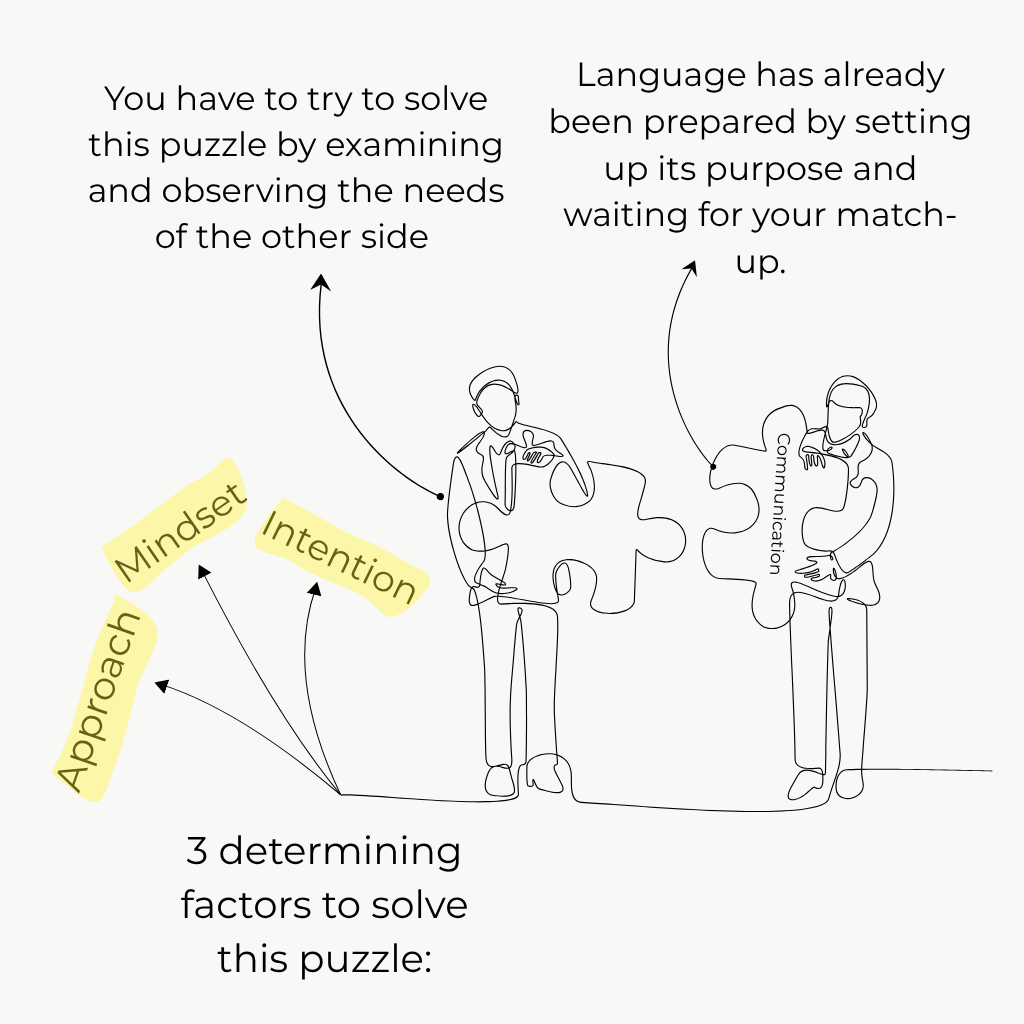
Step 1: Fixing the intention
Intention means your aspiration of doing, thinking, and seeing things. It has religious, spiritual & practical significance in our lives. I would say the beginning of all things starts with intentions. Thus, fixing the intention is crucial and compulsory for everything we do. However, intention could be different for each individual depending on circumstances, conditions, and visions. But the true intention defined by the works or activity we do: why its for? The universal sake of things, not our self-chosen intention. Consequently, to find our language learning purpose, we need to search what is the intention of language (Language intention1 = Our intention2.) Whatever your goal is, your focus should be on communication and conversation. Then, the stronger your goal = the faster your acquisition.
Step 2: Fixing the mindset
The vital and core source of our behavior is our mindset means how we believe and react to things that shape our actions. Mindset develops inside of us from our surroundings and perceptions that impact our way of living, observing, and interacting. As a result, religion, culture, & environment play a critical role in our beliefs and growth to behave according to them. Anyway, here I would like to display one of the many mindsets that I follow to evaluate the truth of things is “Content not the Contexts” in other phrase “Reality over motivations and emotions” Specifically, In language learning this mindset will help you to rid all the wastes of thoughts from your mind and keep your road map of acquisition precise and clear by constantly observing and judging any circumstances with applying this mindset. Such as doing things for itself, not for outside things like doing things for getting praise, proving to others, fulfilling desires & expectations, etc.
Normally, our mind is a thought machine that generates thoughts 24/7 based on our attention to things. For instance, we know about the shame plant departing or folding and droopping its leaves after being touched, which resembles our thoughts when we touch one, all the related thoughts to it come. So, don’t take them seriously except the one that you want to be the most to come and live with it, as well as let others come because it is a universal process, don’t bother it. The punchline is that be and live in Truth by your judgment and proper evaluations.
Step 3: Fixing the approach
Approach is a method or way of doing things that varies an individual’s intentions, mindsets, and beliefs. I believe in the natural process of growth of anything that I also apply to language learning and acquisition. The characteristics of this approach are freedom3 and experimentation that connect with reflections4, realizations5, and applications6. Such as, in language learning, I’ve been through phases like initial, liberated, and flourished, where I’ve explored and experienced significant transformations of thinking, doing, and seeing. This way of learning is fully independent, where manipulation is absent and observation is present. Every action of your learning will be reflected by your observations from where realization comes to apply your hypotheses and ideas in your acquisition for betterment.
Intrinsic growth always proceeds slowly because of its steady nature that empowers process and progress. Thus, the Initial stage of learning is prolonged due to your lack of experience and maturity. In this stage, you’ll repeat the cycle of search, search, and find things to learn & know, until you learn how it works. Furthermore, you’ll experience various psychological barriers that’ll teach you about the fundamental nature of the brain and mind, which you could implement in your lifelong actions and events as tools.
To Sum Up this content, we tried to identify the purpose of a language or why it is made for? And we find it has made for communication. Specifically, for conversation. Also discussed that we make language a barrier or create blocks for ourselves due to our misconceptions about language learning. Anyway, I said we have to match up the purpose between me and language : (Why language is made for + Why I want to learn language, or is my goal of language learning to involve communication and conversation.) Finally, for starting the acquisition of language, we have to fix 3 things: first, intention and focus on communicational & conversational language. Second, always stick to content, not the contexts or inside, not the outside things: What matters? Live in Truth and be truthful about yourself. Third, follow the intrinsic or natural process of learning through observations, realizations, etc. Experience every moment of your learning and make it fascinating.
